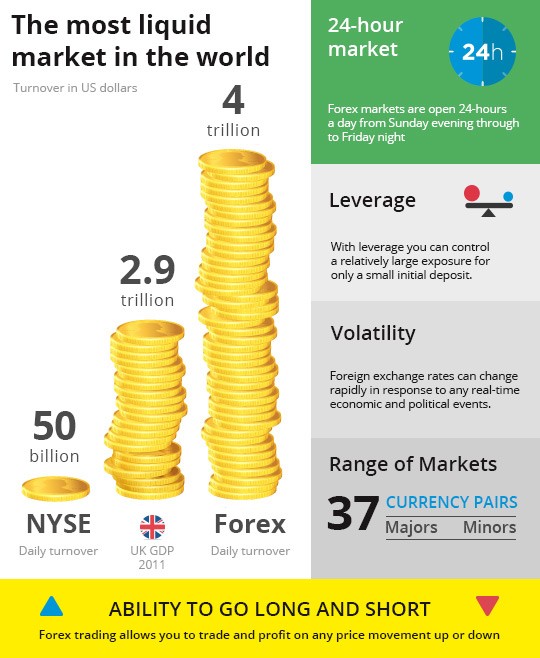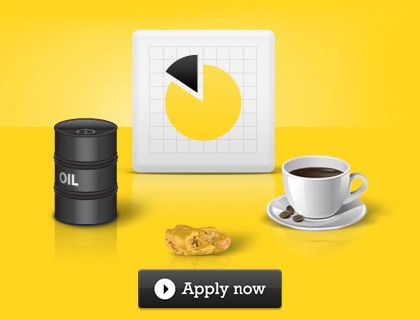What is CFD Trading Learn about CFDs with City Index
Post on: 16 Март, 2015 No Comment

Contracts for Difference, also known as CFDs, are a rapidly growing market attracting an increasing number of retail traders from around the world.
A CFD, or Contract for Difference, is an agreement between two parties to exchange the difference between the opening price and closing price of a contract. 
You can use CFDs to trade and speculate on the price movements of thousands of financial markets regardless of whether prices are rising or falling. You can go long (buy) a CFD market, and profit from prices as they rise or go short (sell) and profit from falling prices. CFDs give you a great deal of trading flexibility, allowing you to profit from financial markets regardless of price direction.
CFD trading is also a leveraged product, allowing you to maximise your market exposure for only a small fraction of the investment you would typically need to trade the underlying asset directly.
By trading CFDs with City Index, you can tap into the expertise of one of the world’s leading providers. We offer access to over 10,000 instruments globally, so whatever your trading objectives, you’ll find the instruments you want to trade, including thousands of prices on equities in Asian, US, European and UK markets. We also offer trading on the movement of global indices and major or minor currency pairs.
To help you to make those all-important trading decisions, we also have the latest market news, customisable charts and market profile information, available free on our trading platform.
Why Trade CFDs with City Index?
CFD trading with City Index offers a number of benefits over other forms of trading:
1. Profit when the markets fall as well as rise
With CFD trading, you can profit from a falling market by ‘going short’ (selling), just as easily as you could profit from a rising market by ‘going long’ (buying). If you believe that a company or market will experience a loss of value in the short term, you can use CFDs to sell it today, and your profits will rise in line with any fall in price. As always, if the price of your trade moves against you, your position will result in a loss.
2. Leverage your investment potential and reduce your capital outlay
Trading CFDs allows you to take an equivalent position to a direct purchase for a fraction of the initial capital outlay. Normally, you would need to pay the full value of your investment to your broker. However, at City Index you can trade the same market through a CFD but only be required to deposit a small initial percentage of the same equivalent value, typically 10% to 20%, meaning that you can take a larger position for a relatively small amount of funds, magnifying your return on investment. 
For example if you wanted to go long or buy $10,000 worth of Genting Singapore, you can do so with an initial deposit in your City Index CFD trading account of $1,000 (with a margin of 10% on Genting Singapore shares).

This leverage is great news if the market moves in the direction that you expect, but it carries a high degree of risk if the market moves against you. See an example of how you can trade CFDs using just a small percentage of the overall trade value or learn how you can trade CFDs with City Index.
3. Access to global markets
CFD trading gives you access to a wide range of markets that would not otherwise be available to retail investors all from one trading platform. You can speculate on the price movement of an index such as the Singapore Index, FTSE 100 or Wall Street Index or trade a major currency pair such as euro/dollar or dollar/yen. At City Index we offer access to over 10,000 instruments globally, including shares, indices, currencies and sectors. See our range of CFD markets .
4. Hedging with CFDs
As CFDs allow you to short sell and therefore profit from falling market prices, they are often used as a ‘hedging’ tool by investors as ‘insurance’ to offset losses made in their portfolios. For example, if you have a long-term portfolio you wish to keep, but feel that there is a short-term risk to the value of your investments, you could use CFDs to mitigate a short term loss by ‘hedging’ your position.
This way, if the value of your portfolio does fall, the profit in the CFDs would help you offset these losses, thus enabling you to retain your portfolio without incurring any significant loss to its overall value. 
For more information on CFD trading, see our risk disclosure notice, found in our Terms and Policies Document.














